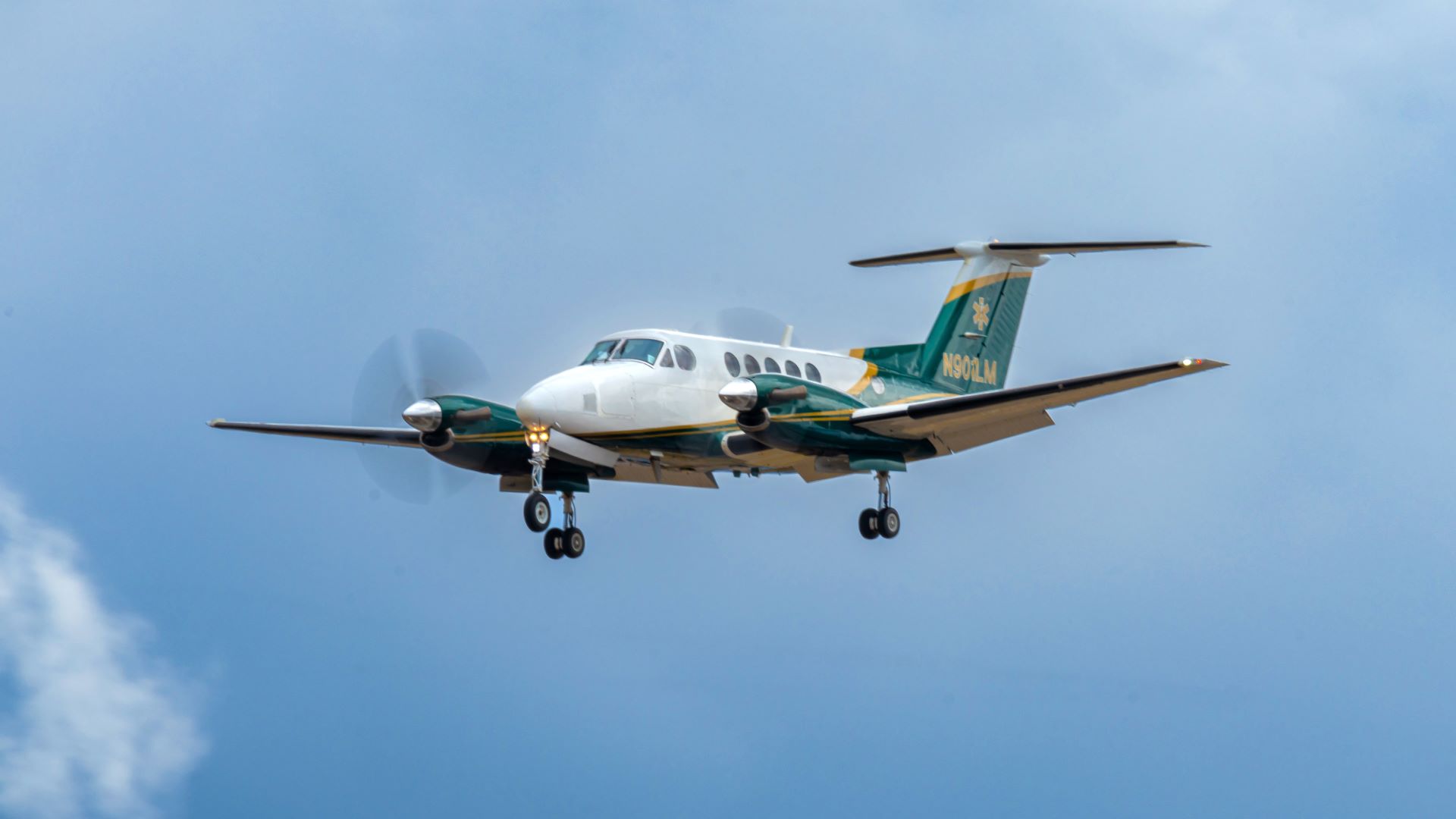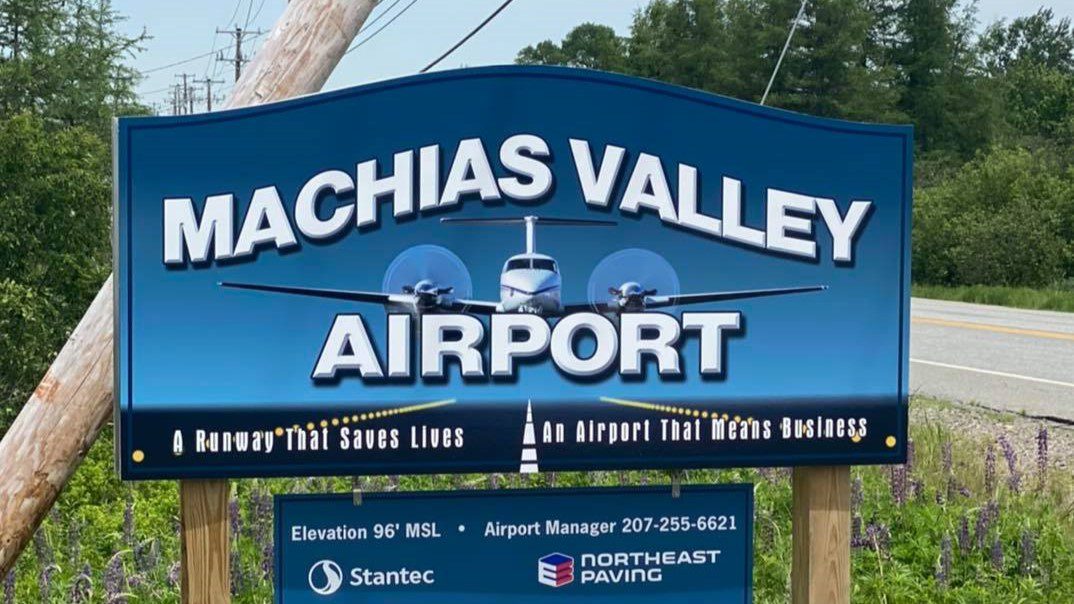After coming up short for decades, the Machias Valley Airport is closer to adding a longer runway for LifeFlight of Maine’s fixed-wing airplane.
In addition to its 2,900-foot runway, the airport could get federal clearance as early as next spring to building a roughly 4,300-foot runway, which would allow LifeFlight’s plane to land safely in most weather conditions.
That’s a difference not only in feet but critical lifesaving minutes.
This past year in the Machias area, 168 critically ill patients spent an hour or more traveling by helicopter to a lifesaving facility — instead of the 10 to 15 minutes it would have taken in LifeFlight’s fixed-wing plane, according to the airport committee’s annual report.
Although all LifeFlight Leonardo helicopters and its Beechcraft plane are equipped as “mobile ICUs,” and travel time depends on a number of factors, the plane can fly farther and faster in worse weather.
Bill Kitchen, the Machias town manager, airport manager — and a volunteer fireman — said he’s been on calls where the weather and those precious minutes mattered.
“There’s nothing more upsetting when you’re pulling somebody out of a car wreck in critical condition and you have to ask, are the conditions right for the plane to land on the runway?” said Kitchen. “They almost never are, so you kind of put your head down and say, ‘OK, we’ll do the best we can.’ ”
The need for more reliable emergency medical air evacuation is why the town was awarded $1.25 million of congressionally directed spending in 2021 for an environmental review and property acquisition to add a longer runway, beginning a multiyear, four-step process.
The first two phases are underway: the design phase to determine the proper alignment and siting for the runway; and the environmental assessment by the National Environmental Protection Agency (NEPA).
Last week, the first of three public hearings was held at Rose M. Gaffney School in Machias, where four site options were presented by Guy Rouelle, aviation director for DuBois & King, the Vermont-based engineering and consulting firm leading the project.

Two of the four proposed site alignments were ruled out because one of them directs the flight path over the town, and the other straddles Machias and Whitneyville, further complicating the approval process.
That narrowed the focus to the two options that vary in terms of the number of properties that would need to be acquired, how many property owners would be affected, and the impact to wetlands.
Ideally, according to Rouelle, the Federal Aviation Administration (FAA) and NEPA want a solution that supports a runway long enough to support LifeFlight and minimizes the impact to the environment.
Seemingly, the easiest solution with the least impact would have been extending the existing 2,900-foot-long, 60-foot-wide runway. But because the runway is pinched between Route 1 and the Machias River, it’s not an option.
Kitchen said officials made one of the town’s top five planning mistakes by situating the runway in such a limited location when the airport was built in the mid-1960s. Rouelle said part of their job as consultants is to make sure the new runway isn’t again hemmed in should needs change over time.
“In our plan we’re going to work with the FAA to protect the airspace around the airport for what I call future proofing, just in case 20 years from now they want to do something a little different, maybe a little longer runway,” Rouelle said.
Kitchen hopes someday the airport could take on commercial flights, and they are keeping that in mind as they design the extension.
He’s optimistic the FAA and NEPA will grant clearance for the project to move forward by next spring. That would make the project “shovel ready,” for the final two phases: acquisition of properties from affected property owners; and the final design, permitting and construction.
An estimated $15 million to $20 million will need to be secured for the actual construction of the runway, according to Rouelle and Kitchen. Rouelle, who wrote the grants that ultimately funded airport expansions in Rangeley and Jackman, said he’s confident Machias’ project will be funded as well.
He said the money likely will come from a number of sources, including the FAA, additional earmarks through Sen. Susan Collins’ office, and the Maine Department of Transportation, which has already committed roughly $1 million for the new runway as part of its three-year transportation plan.
LifeFlight has been involved throughout the planning, also advocating to secure state and federal funding, as it did for the airport expansions in Rangeley, Jackman, Princeton and Eastport. The King Air fixed-wing can land at all of those airports under most conditions, according to Josh Dickson, director of aviation services for LifeFlight.
Machias is the last rural airport on LifeFlight’s list of expansions seen as crucial to its mission.
“We firmly believe geography shouldn’t be the harbinger of healthcare outcomes,” said Tom Judge, the LifeFlight of Maine founder and former CEO. “So we need to do everything we possibly can to make sure there’s a system that can get to patients.”

The nonprofit air ambulance service, supported by private donations and insurance reimbursements, will soon roll out its in-house ground transportation service with three specially equipped ambulances. LifeFlight currently uses ambulances from municipal and private services whenever ICU-level care ground transport is needed for a variety of reasons, including weather and medical necessity.
The $1.92 million initial investment for the new ambulances will be funded through the LifeFlight Foundation, although the organization also asked for federal funding through Collins’ office that has been included in appropriations, according to Henry Frank, the LifeFlight communications director. He added the funds have not been dispersed and it’s unclear when will be received, given uncertainties around appropriations making it through Congress.
LifeFlight operations and salaries are supported with insurance reimbursements, but the group cannot bill for services when it borrows an ambulance for ground transports. Those private companies bill for reimbursement. Joe Kellner, who took over as the LifeFlight CEO on Oct. 1, said owning a ground transportation service will provide a new source of revenue.
“The revenue will not fully offset the costs of performing the services,” Kellner said. “However, it will offset some of the costs that LifeFlight has been absorbing associated with providing ground transport.”
Last year, LifeFlight transported 2,020 patients by air and 448 by ground, with 26 percent of its transports occurring on the ground. Kellner said they expect those numbers to rise, citing increased tourism, reduction in services at community hospitals (such as closing of obstetric units), and the aging population.
Additionally, Kellner said they expect requests for ground transports to increase when their new ambulances are stationed in Lewiston and Sanford, based simply on the availability of those assets. Another ambulance will be stationed in Bangor.
Kellner believes LifeFlight’s ground transportation will help support a fracturing EMS system. But Rick Petrie, the interim executive director for Atlantic EMS, a regional EMS advocacy group, doesn’t completely agree.
He acknowledged LifeFlight’s new service could help address the chronic problem of moving patients, particularly those critically ill, but questions the benefit for Washington County because the closest LifeFlight ambulance would launch from Bangor.
Northern Light AR Gould Hospital in Presque Isle has run its own in-house specialized, critical care ground transport ambulances for more than 20 years. Daryl Boucher, the vice president of operations for the hospital, doesn’t see LifeFlight’s new ground service as competition. He said LifeFlight has been a great partner and he looks forward to that continuing.
“Their service is going to complement what we do and adds one more resource to help move patients around that, frankly, on a daily basis is a challenge,” said Boucher.
Still, Petrie said it’s a double-edged sword.
“The difficulty is that (LifeFlight’s ground service) will impact some areas’ ambulance services who’ve been doing those calls and getting paid for them,” Petrie said. “What we really need to be looking at as a whole is why are we in this crisis and what do we need to do collectively to get out of it?”
The debate over how to create greater access to emergency medical transport — while also helping struggling EMS services survive — comes as the blue-ribbon commission to study emergency medical services in the state is reconvening.
The first of six meetings will be held Monday, with a report due Dec. 6. Kellner, the LifeFlight CEO, is on the commission; other members have not been announced.
According to the meeting agenda, items initially being reviewed include the Maine Emergency Medical Services strategic plan; EMS-related legislation proposed in 2023; the Department of Health and Human Services’ role in support of EMS in Maine; and commission goals and desired outcomes.
The commission’s first report earlier this year resulted in legislators approving $31 million in funding, as well as other relief, that will provide breathing room for the roughly 275 emergency medical services statewide, some on the verge of collapse.
The aid will be distributed in two batches, with the first 40 percent given out by Maine EMS through a grant process beginning Oct. 25, according to Petrie. He hopes the remainder will go out shortly.
“We’re moving slowly to where we need to be, but now we need to work on the sustainability or we’ll be right back in the same place,” Petrie said.







